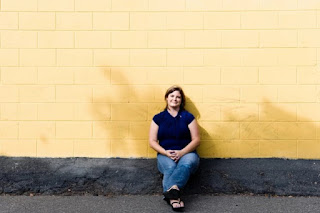The third zone is what I'm calling the Flourishing Zone (psychologists call it the Social Engagement or Social Communication System). This is where happiness, resilience, and fulfillment are available to us. It's also where learning becomes possible, as well as creativity, presence, self awareness, groundedness, rationality and connection. So how do we know which Zone we're in?
Ask yourself this:
When I'm feeling an emotion, how do I know that I'm feeling it?
Let's take anger as an example. How do you know that you're feeling angry? Try and answer this question yourself before reading on.
The answer is largely in our bodies. We know an emotion is present because of the sensations in our bodies. When you feel tense, how do you know? Your muscles might tighten, perhaps your heart rate increases, your breathing becomes shallow, there might be jitters in your stomach, your posture might stiffen.
If you rely heavily on your mind for your work (and you haven't developed a mindfulness practice), there's a good chance you could be out of touch with your body. Even if you are physically active, that doesn't mean you have good body awareness. Many people in our modern societies dwell exclusively in their heads - they are numb from the neck down. We see our minds as the primary tool of our success and forget that they are embodied.
Our minds are incredibly important to our flourishing, but they are only half the machinery of our experience. It's much more likely you are out of practice listening to the other half - your body. Yet the body is an incredibly reliable indicator and informant about your current experience.
Here are some questions you can ask yourself to start tuning in to which (neural) Zone you are in. This practice starts in the most familiar place - our minds - and works from there. You can ask these questions anywhere, any time during the day. Give yourself a good few minutes to start with but your mindfulness muscle will get faster the more it's used. (It's helpful to close your eyes while trying to answer these questions, as our visual field takes up a lot of our attentional capacity.)
The practice is simply to describe what's going on for you in three areas:
MIND: What mind activity is present? Is there problem solving? Are there mental movies playing about some imagined future scene or one from the past? Is there planning? Remembering? Storytelling?
EMOTIONS: What feelings are present? Are they generally pleasant, unpleasant or neither? There could be more than one. Ask yourself this question and then just wait to see what answers arise. Ask if there's anything else. Give it time. If the answer is close but not quite right, just ask the question again, and wait. (If you'd like some help identifying feelings, try our free Tool: What Am I Feeling? )
BODY: What body sensations are here? Is there tightness or holding anywhere? If so, where? Is there heat or cold? Is there movement? If so, what kind? Is it rhythmic, or jittery or something else? If you feel energy somewhere, what does that feel like? Describe it to yourself.
Memorise the three areas of focus: mind, emotions, body, and practice describing what's happening whenever you can. If you are doing this, you're unlikely to be in the Freeze Zone, so practice identifying whether you are in the Fight/Flight Zone, or in the Flourishing Zone, based on the descriptions in my last post here.
The more quickly you can notice which zone you're in, the less likely you are to make a mess of things out of reactivity - to harm yourself, your relationships, and others.
If you find you're in the Fight/Flight zone, your first job is to wheel in a bucket of compassion. It's painful to be in this zone! And it's very human.
The second job is to act on that compassion by self-soothing - go for a run, have a hug, talk with a friend - figure out what works for you and do it.
Once you've soothed yourself out of the Fight/Flight zone, then you're able to learn from the situation and we've got some Tools to help....
- If you need to get out of a downward spiral and reframe a situation you can't (or choose not to) change, you can try our Fixing the Frame workbook.
- If you need to work through a difficult situation to release its emotional grip on you, try Inviting Your Demons in for a Tea Party.
- If you simply need some help identifying what you're feeling, try our free Tool: What Am I Feeling?
I invite you to practice this over the next week. Notice when the body-mind is in the Fight/Flight Zone, apply compassion, self-soothe, then look for learning.
Chat soon.
Lenorë




